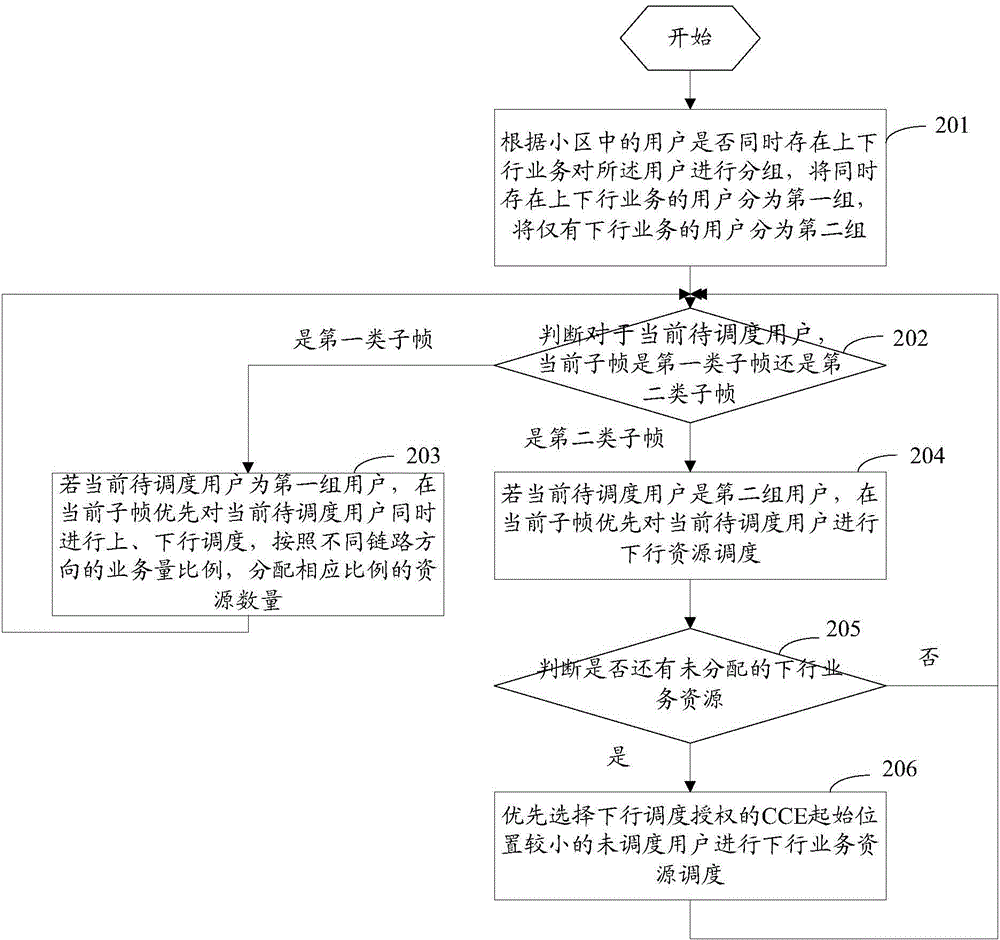Uplink and downlink unified resource allocation method
An associated and step-by-step technology, applied in electrical components, wireless communications, etc., can solve problems such as throughput reduction, resource conflict, and waste of PUCCH resources, and achieve the effect of improving uplink throughput and reducing the number of occupied resources.
- Summary
- Abstract
- Description
- Claims
- Application Information
AI Technical Summary
Problems solved by technology
Method used
Image
Examples
Embodiment Construction
[0027] Different from the existing technical solutions that independently allocate resources between the uplink and downlink traffic channels, and between the uplink and downlink control channels and traffic channels, or semi-statically reserve PUCCH resources, the uplink and downlink Joint resource allocation methods include:
[0028] A. Divide users who have both uplink and downlink services in the cell into the first group, and divide users who only have downlink services in the cell into the second group;
[0029] A. Divide users who have both uplink and downlink services in the cell into the first group, and divide users who only have downlink services in the cell into the second group;
[0030] B. Judging whether the current subframe is a first-type subframe or a second-type subframe for the current user to be scheduled, if it is a first-type subframe, perform step C, and if it is a second-type subframe, perform step D; the first type The subframe meets the following co...
PUM
 Login to View More
Login to View More Abstract
Description
Claims
Application Information
 Login to View More
Login to View More - R&D
- Intellectual Property
- Life Sciences
- Materials
- Tech Scout
- Unparalleled Data Quality
- Higher Quality Content
- 60% Fewer Hallucinations
Browse by: Latest US Patents, China's latest patents, Technical Efficacy Thesaurus, Application Domain, Technology Topic, Popular Technical Reports.
© 2025 PatSnap. All rights reserved.Legal|Privacy policy|Modern Slavery Act Transparency Statement|Sitemap|About US| Contact US: help@patsnap.com


